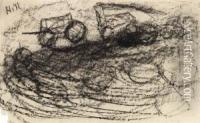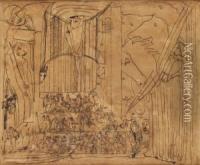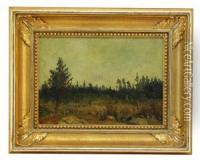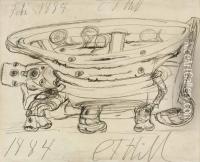Carl Fredrik Hill Paintings
Carl Fredrik Hill was a Swedish painter born on May 31, 1849, in Lund, Sweden. He began his education at the Lund University before moving on to the Swedish Royal Academy of Fine Arts in Stockholm, where he studied between 1866 and 1873. During his time at the Academy, Hill was influenced by the traditional academic style of painting, which was predominant at the time. However, his work soon started to diverge from this style as he developed his own approach to landscape painting.
After completing his studies, Hill traveled extensively through France and Switzerland, which had a profound impact on his artistic development. In Paris, he was deeply influenced by the Barbizon school and the works of the Impressionists, who were gaining recognition at the time. Hill's exposure to these new movements led him to adopt a freer brushwork and a brighter palette. His landscapes from this period are characterized by a sense of immediacy and naturalism, a departure from the more composed and idealized landscapes of his earlier years.
In the late 1870s, Hill suffered a mental breakdown, which affected his ability to continue painting as before. He was diagnosed with psychosis, and his condition led to institutionalization in 1883. Despite his illness, Hill continued to create art, although his later works were produced in a more private setting and were often more introspective and fantastical than his earlier landscapes. These later works are marked by bold colors, dramatic compositions, and a departure from reality, often reflecting his inner turmoil.
Carl Fredrik Hill's contribution to Swedish art is significant, as he helped to introduce new styles and techniques to Swedish landscape painting. His early landscapes are celebrated for their beauty and technical skill, while his later works provide a poignant glimpse into the artist's struggle with mental illness. Hill's art remains influential and is exhibited in many art galleries and museums in Sweden and beyond.
Hill's life was one of great artistic promise that was tragically altered by mental illness. Despite the challenges he faced, his body of work continues to resonate with audiences today for its emotional depth and innovative approach. Carl Fredrik Hill passed away on February 22, 1911, but left behind a legacy that has cemented him as a key figure in the history of Swedish art.

















